June, 2010; New York, NY
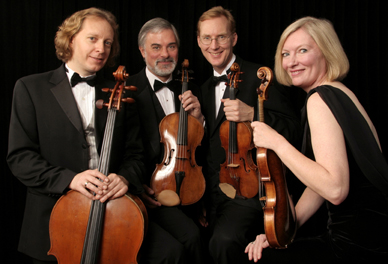
The American String Quartet
Central Europe has always been regarded as the cradle of the classical chamber music performance tradition. Its basic elements were inner involvement, outward restraint, respect for the composer’s style and intentions, and observance of the letter and spirit of the score. In America, the seeds of such a tradition were planted comparatively recently, but flowered in a dazzling proliferation of string quartets much sooner than anyone expected. This was aided in part by the immigration of a large number of European quartets, such as the Galimir, Busch, Budapest, Kolisch, and Pro Arte, who passed their knowledge, experience, and dedication to living composers on to a younger generation of musicians. These have now become the guardians of the venerable old tradition, while their European counterparts seem to have cut themselves off from their roots and moved in an entirely different direction. This was illustrated by recent concerts of four quartets: two German and two American.
Formed in 1994, the Henschel Quartet is a family affair: its players are violinists Christoph and Markus Henschel, violist Monika Henschel-Schwind, and cellist Mathias Beyer-Karlshoj; the Kuss Quartet’s players are violinists Jana Kuss and Oliver Wille, violist William Coleman, and cellist Mikayel Hakhnazaryan. Both groups have won prestigious international prizes and perform in concerts and festivals world-wide. The Henschel was invited to play Haydn’s “Seven Last Words” for the Pope last March.
Technically, both groups are equal to every challenge; their intonation and ensemble are impeccable, their phrasing and dynamics unanimous, their tone is vibrant and intense. Musically, they overdo everything; emphasizing contrast, speed, energy and drive, they lack repose and inwardness, so perhaps it is natural that they showed more affinity for the contemporary works on their programs than for the classical and romantic ones. Indeed, the Kuss’ players say they have “given much thought on how to restore the string quartet to where it once stood at the cutting edge of cultural and compositional life.”
The Henschel’s playing is extroverted, aggressive, over-projected, powerful, often harsh in sound, with stark contrasts and great liberties taken; sometimes every measure had a different tempo, and rhythms were wildly distorted. The cellist is unusually strong, and the first violinist is clearly the “boss,” leading ostentatiously and missing no chance to display his virtuosity. At its April 11 concert, a late Haydn quartet lost its elegance, humor and graciousness, and the whimsical, waltz-like Trio became a showpiece for the first violin. Schumann’s Quartet No. 1 was long on forcefulness, short on poetic intimacy, ardor and tenderness. In contrast, the Adagio of Barber’s Quartet Op. 11 sounded rich and lyrical, and Erwin Schulhoff’s Quartet of 1924 was riveting. Born in Prague in 1894, Schulhoff perished in a Nazi concentration camp in 1942, but though the quartet was written long before the Germans invaded his country, it has a dark, foreboding, grotesque quality, which the Henschel brought vividly to life. The Kuss’ style is less assertive and willful and more democratic than the Henschel’s. Yet at its April 9 concert, the playing, while efficient and polished, was a bit superficial. Tempi were too fast to capture the grace and expressiveness of Mozart’s “Hunt,” or the good humor and passion of Brahms’ Quartet No. 3. It was the performance of Alban Berg’s Quartet Op. 3 that was most persuasive. The players projected the work’s urgency, intensity and lyricism, and, despite its dense texture, brought out the themes, lines and voices.
The American String Quartet (Peter Winograd and Laurie Carney, violinists, Daniel Avshalomov, violist, Wolfram Koessel, cellist) was formed in 1974; the Orion Quartet (Daniel and Todd Philips, brothers and alternating violinists, Steven Tenenbom, violist, Timothy Eddy, cellist) in 1987. Both embody the essential traditional qualities of quartet-playing: tonal beauty, technical control without showiness, expressiveness without excess, and projection tempered with intimacy. They are equally at home in the standard literature and the works of living composers; the American has commissioned, premiered and recorded quartets by Richard Danielpour, Kenneth Fuchs, and Curt Cacioppo, the Orion quartets by Leon Kirchner, Wynton Marsalis and John Harbison, among many others. Both groups also continue another important tradition: they train future chamber musicians through residencies in colleges, conservatories and festivals.
The Orion’s concert on April 18 included Brahms’ Piano Quintet with Peter Serkin, Beethoven’s “Harp” Quartet, and a work written for the group: Kirchner’s Quartet No. 4. The players’ style is distinguished by its warmth, expressiveness, fraternal ensemble and tonal and emotional balance. Their immersion in the Beethoven Quartets began with a series of free concerts for the Millenium, and includes a recording of the cycle. Serkin has played the Brahms with many great quartets; he fitted into the ensemble with uncanny unanimity, and never overpowered the strings – an extraordinary feat.
The American’s program on May 1 began and ended with late Schubert: the Quartettsatz in C minor and the great G major Quartet, flanking Berg’s Quartet Op. 3 and Webern’s Five Movements Op. 5. The performances were beautiful, as always: technically flawless, tonally vibrant, involved and concentrated.
The European string quartet tradition is in good hands – in America
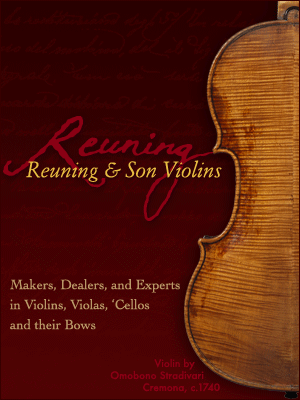
by Edith Eisler for New York Concert Review; New York, NY
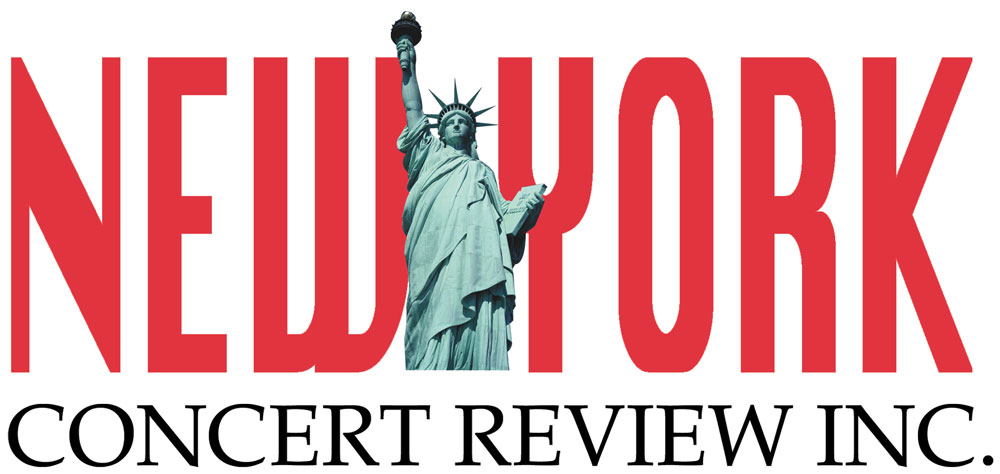
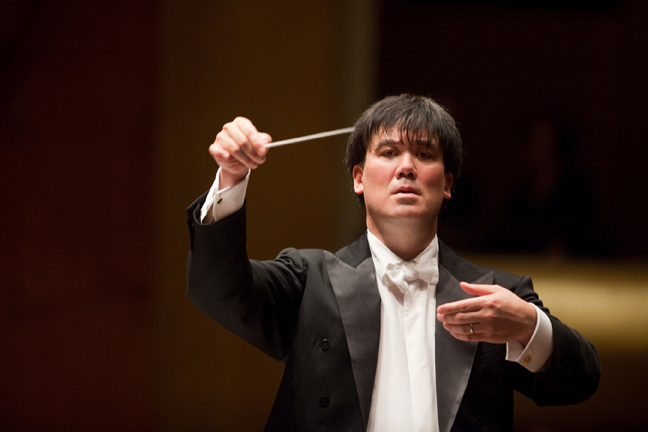
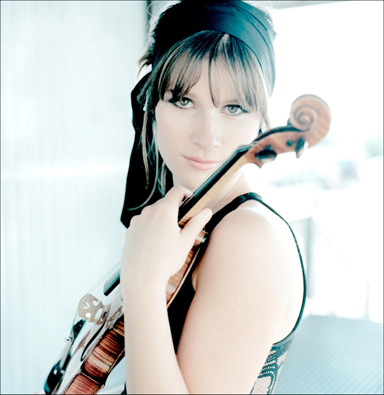


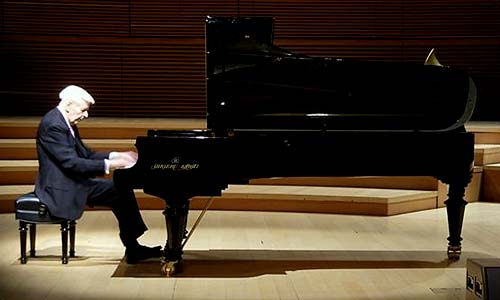
 Despite a huge snow storm and a prediction of one, people came out in droves to the large Stern Auditorium at Carnegie Hall to see Emanuel Ax and Joshua Bell. In many ways, violin and piano recitals sound best in smaller, more intimate spaces for which they were intended, but Ax and Bell sell lots of tickets and they need a space that can meet demands. On February 10th, 2010, Manhattan received about 10 inches of snow—not nearly as much as Washington D.C. got the week before—but nonetheless, it was enough to potentially scare people away. Good thing Emanuel Ax has such a great following; the many that attended were treated to a 200th Anniversary celebration of Chopin and Schumann’s birth. Ax was at his best in music by Chopin: the Polonaise-fantaisie in A-flat, the Andante spianato and Grand Polonaise, and especially three Mazurkas: the op 41, No. 1 in C-sharp Minor; the Op. 24, No. 2 in C Major and the Op. 56, No. 3 in C Minor. The young Brit Thomas Ades wrote three mazurkas of his own for the occasion, and they are charming—although they don’t really sound like mazurkas. The first one was almost a carbon copy of Prokofiev, but the last two were quite inventive, with unusual leaps and harmonies. Throughout the program, Ax often used his soft-pedal, and his subdued, semi-passionate performances of Schumann’s Fantasiestucke and Fantasy in C Major lacked some grandeur and spontaneity in faster passages. His encore, the Chopin Waltz in A minor, was also one of his more automatic-pilot performances. Maybe his performance inadvertently hurried as a result of subconsciously and altruistically wanting people to get home after a stormy day. (I know; it’s a stretch)
Despite a huge snow storm and a prediction of one, people came out in droves to the large Stern Auditorium at Carnegie Hall to see Emanuel Ax and Joshua Bell. In many ways, violin and piano recitals sound best in smaller, more intimate spaces for which they were intended, but Ax and Bell sell lots of tickets and they need a space that can meet demands. On February 10th, 2010, Manhattan received about 10 inches of snow—not nearly as much as Washington D.C. got the week before—but nonetheless, it was enough to potentially scare people away. Good thing Emanuel Ax has such a great following; the many that attended were treated to a 200th Anniversary celebration of Chopin and Schumann’s birth. Ax was at his best in music by Chopin: the Polonaise-fantaisie in A-flat, the Andante spianato and Grand Polonaise, and especially three Mazurkas: the op 41, No. 1 in C-sharp Minor; the Op. 24, No. 2 in C Major and the Op. 56, No. 3 in C Minor. The young Brit Thomas Ades wrote three mazurkas of his own for the occasion, and they are charming—although they don’t really sound like mazurkas. The first one was almost a carbon copy of Prokofiev, but the last two were quite inventive, with unusual leaps and harmonies. Throughout the program, Ax often used his soft-pedal, and his subdued, semi-passionate performances of Schumann’s Fantasiestucke and Fantasy in C Major lacked some grandeur and spontaneity in faster passages. His encore, the Chopin Waltz in A minor, was also one of his more automatic-pilot performances. Maybe his performance inadvertently hurried as a result of subconsciously and altruistically wanting people to get home after a stormy day. (I know; it’s a stretch) James Levine, who just recovered from spinal surgery, has returned to the Metropolitan Opera pit and the concert stage in fine fettle. At his January 24th Carnegie Hall appearance with the MET Orchestra – their second this season – his high-voltage energy, fiery temperament, exuberance, and emotional—as well as mental—concentration were totally unimpaired. However, his conducting technique seemed to have undergone a startling change. Since the musicians, after many years of collaboration, are so attuned to him that they respond to the merest lift of his eyebrows, his motions used to be “close to the vest” and so small as to be invisible to the audience. His rapport with the orchestra is still palpable, but his gestures have now become big and sweeping: he waves his arms in all directions, turning and swaying from side to side. It was very exciting. The program was framed by two of the repertoire’s most popular symphonies: Schubert’s “Unfinished” and Beethoven’s Fifth. Levine seems to have succumbed to the current penchant for extreme dynamic contrasts, from the softest murmur of whispering strings to the most thunderous use of timpani. The opening of the Schubert was nearly inaudible, but otherwise, it was beautifully lyrical and introspective. The Beethoven was extremely dramatic, and the orchestra played splendidly, as always. Levine, in addition to conducting four operas at the Met, is returning to Carnegie Hall for two concerts with the Boston Symphony, plus directing Met Chamber Ensemble Concerts and master classes. The audience gave this intrepid musical superman a hero’s welcome and rewarded him with standing ovations.
James Levine, who just recovered from spinal surgery, has returned to the Metropolitan Opera pit and the concert stage in fine fettle. At his January 24th Carnegie Hall appearance with the MET Orchestra – their second this season – his high-voltage energy, fiery temperament, exuberance, and emotional—as well as mental—concentration were totally unimpaired. However, his conducting technique seemed to have undergone a startling change. Since the musicians, after many years of collaboration, are so attuned to him that they respond to the merest lift of his eyebrows, his motions used to be “close to the vest” and so small as to be invisible to the audience. His rapport with the orchestra is still palpable, but his gestures have now become big and sweeping: he waves his arms in all directions, turning and swaying from side to side. It was very exciting. The program was framed by two of the repertoire’s most popular symphonies: Schubert’s “Unfinished” and Beethoven’s Fifth. Levine seems to have succumbed to the current penchant for extreme dynamic contrasts, from the softest murmur of whispering strings to the most thunderous use of timpani. The opening of the Schubert was nearly inaudible, but otherwise, it was beautifully lyrical and introspective. The Beethoven was extremely dramatic, and the orchestra played splendidly, as always. Levine, in addition to conducting four operas at the Met, is returning to Carnegie Hall for two concerts with the Boston Symphony, plus directing Met Chamber Ensemble Concerts and master classes. The audience gave this intrepid musical superman a hero’s welcome and rewarded him with standing ovations. If any orchestra should tour with Holst’s “The Planets”, the Houston Symphony should—due to its relationship with NASA and the Johnson Space Center. But a film experiment directed by Duncan Copp called “The Planets: an HD Odyssey” didn’t work: the space images and video, though extraordinarily clear and beautiful, were too generic for Holst’s mythical descriptions of the planets and our own imaginations that inevitably follow. It was like experiencing an orchestra play James Horner’s riveting music to the film
If any orchestra should tour with Holst’s “The Planets”, the Houston Symphony should—due to its relationship with NASA and the Johnson Space Center. But a film experiment directed by Duncan Copp called “The Planets: an HD Odyssey” didn’t work: the space images and video, though extraordinarily clear and beautiful, were too generic for Holst’s mythical descriptions of the planets and our own imaginations that inevitably follow. It was like experiencing an orchestra play James Horner’s riveting music to the film